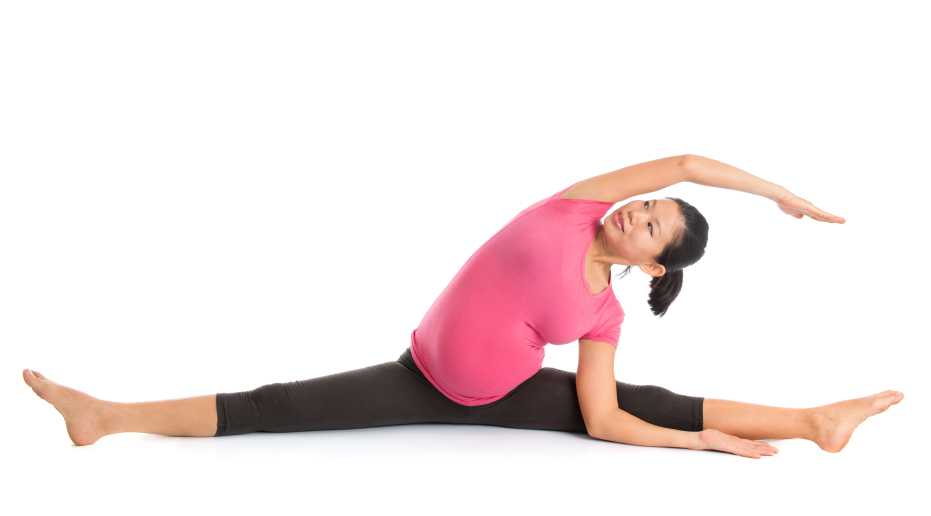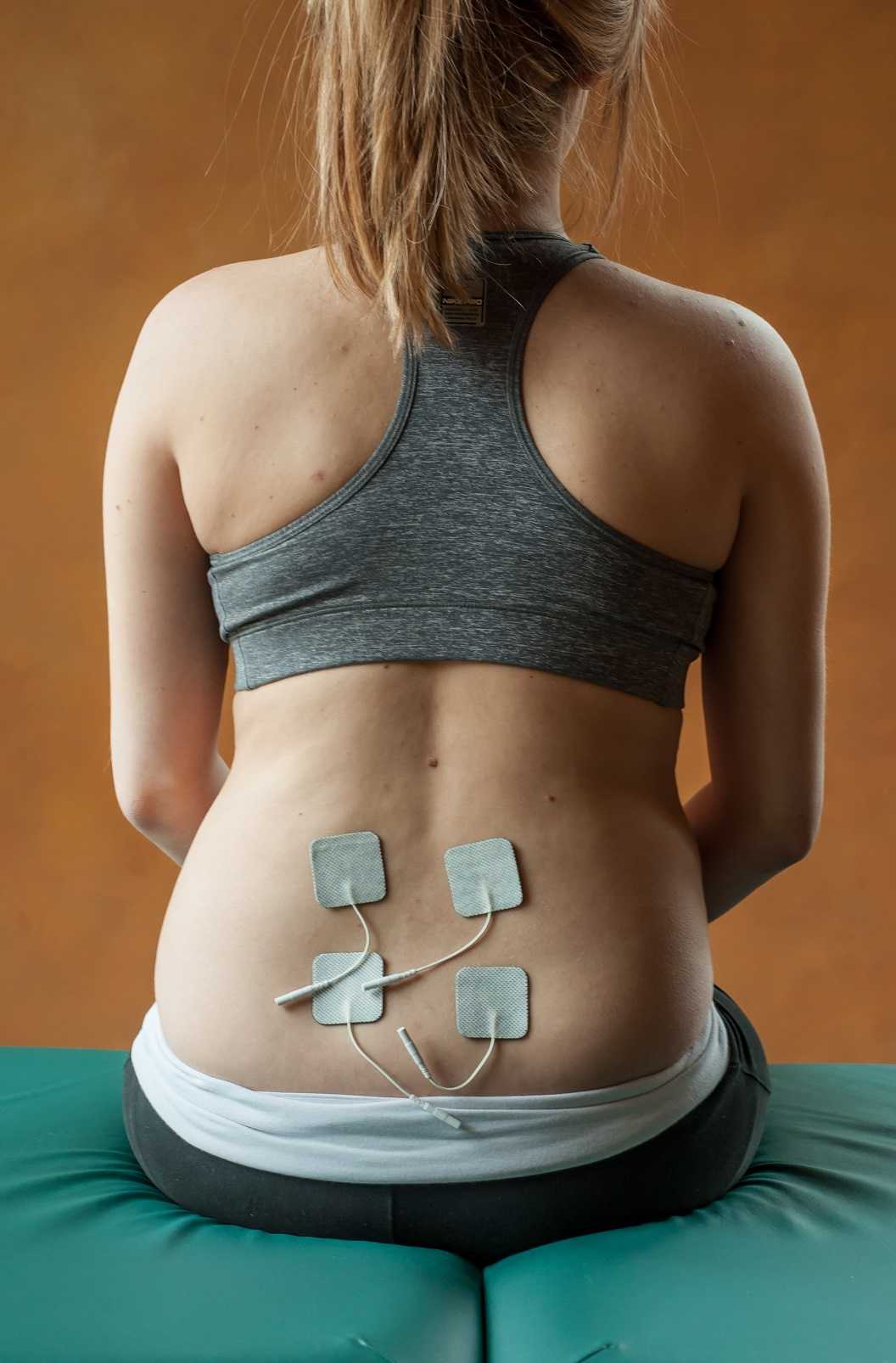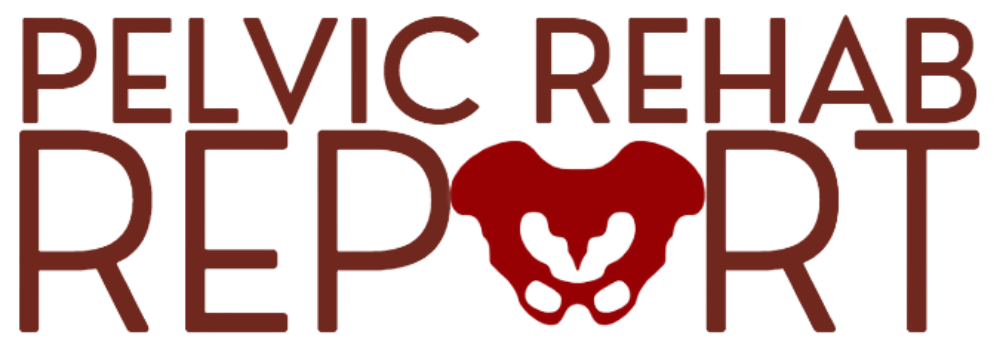Within the evaluation process for pelvic muscle health, a woman is often asked to "bear down" so that the examiner can assess muscle coordination. This maneuver is also utilized during assessment for prolapse or pelvic organ descent. Clinically, the patient's ability to perform a lengthening or bearing down is quite varied, depending upon many factors such as levator plate resting position, strength and coordination, childbearing status, and comfort with the maneuver. What are the implications of not being able to bear down? An interesting study published in 2007 concluded that women, when asked to perform a Valsalva maneuver (a forced expiration against a closed glottis), frequently co-contracted the levator ani muscles.
Participants included 50 nulliparous women between 36-38 weeks gestation and they were assessed with translabial 3D/4D ultrasound following emptying of the bladder. In almost half of the subjects, a pelvic floor muscle contraction was noted during the attempted Valsalva. Patients were provided with visual biofeedback to train the levator muscles to avoid a concurrent contraction, and despite the training, 11 of the 50 women were still unable to avoid a co-activation. (Keep in mind that for purposes of assessment, the prolapse would be best imaged or viewed if the levator muscles were not tightening.) For this reason, the study concludes that levator muscle co-activation is a significant confounder of pelvic organ descent. While a contraction of the pelvic floor muscles may be a positive, protective action when thoracic pressure is increased, a woman's degree of prolapse or pelvic organ descent may appear diminished during an examination. The authors of the study conclude that a clinician may have a false-negative finding for prolapse in the presence of strong, intact pubovisceral muscles.
This research highlights the value of being able to coordinate pelvic muscle activity with the trunk and with breathing. What is also very interesting is that the 50 women studied were all in late third trimester of pregnancy when assessed. Does the population studied have carry-over to non-pregnant women, or women who have never been pregnant? Does the co-contraction exist at the same rates for nulliparous, non-pregnant women? How will the lack of coordination for bearing down during increased trunk pressure affect labor and delivery? Is there a role for pelvic rehabilitation providers in assisting women who have difficulty coordinating the muscles of the trunk and pelvis prior to delivery? To the last question, I would answer "yes" when considering the women who have been referred to pelvic rehabilitation prior to labor and delivery. Having the opportunity to lengthen a tight, shortened pelvic floor, strengthen, alleviate pain in tissues from prior scars or from tension, and to improve confidence about the body's ability to perform the function of bearing down for childbirth can be a very positive preparation for a woman's childbirth experience.
For all the other research ideas that this article generates, we can see that many unanswered questions remain. Even when the research points us in valuable directions, having the skills to assess the patient to find out what is needed in her particular case is critical. For further refining of pelvic muscle assessment techniques, including skills for assessing and treating prolapse and pelvic organ descent, the Pelvic Floor Level 2B continuing education course offers lectures and labs. PF2B is next offered in early March in Oregon, and later this year in Illinois, North Carolina, and Missouri.

Last August, H&W sponsored a brand-new course, Biomechanical Assessment of the Hip & Pelvis: Manual Movement Therapy and the Myofascial Sling System. This course is written and instructed by Steve Dischiavi, MPT, ATC, MTC, CSCS, and covers advanced training in hip and pelvic biomechanics, functional “slings” created by the myofascial system, and use of high level sports medicine theory and applied science.
The course received excellent feedback from participants, so we are thrilled to be offering this course again in 2014. The course will be offered: August 16-17, 2014 in Arlington, VA. We sat down with Steve to see what he learned from his first time teaching with H&W, and what participants can look forward to in 2014.
PRR: You taught this course for H&W for the first time in 2013. What did you learn from your first time teaching this course with H&W?
I honestly was pleasantly surprised. The initial goal of the class was to bring a sports medicine approach to the women’s health arena. I really wanted the women’s health therapist to see how important that specialty area is to orthopedic and sports medicine type clients. The feedback was great. The class was made up mostly of traditional women’s health type therapists who treat women’s health clients almost exclusively. There were a couple of people who do women’s health and ortho clients and there were a couple sports medicine outpatient orthopedic therapists. The whole spectrum of clinicians was represented and the feedback was just as I hoped it would be. The woman’s health PTs seem to take away a lot of the exercises and maybe gave some consideration to the theory I was presenting. I felt the class was engaged and offered great questions. The thing I learned the most after my first class with Herman & Wallace is that there is a place for this class at H&W and hopefully more outpatient orthopedic PTs will take this class and realize their traditional approaches need to have more of a women’s health influence or they will be missing a huge opportunity at better outcomes with their clients.
Were there any surprises? How did feedback from participants inform the evolution of this course as you prepare to teach in 2014?
The biggest surprise to me was that the class was almost all traditional women’s health PTs. I thought there would be more sports medicine type therapists. I think this will take time because I don’t think the traditional sports medicine PT would look to H&W for continuing education. This is exactly the reason for this class. I am very excited, passionate, and proud to be representing H&W as they help the sports medicine and orthopedic PTs integrate more of the realm of women’s health into their existing practice patterns.
What were the most common questions asked by participants during the course? How does the course address frequent questions/misconceptions therapists might have about this topic?
Most everyone in the course wanted me to continually give examples and discuss cases that were not professional athletes. I work with a pro sports team so the majority of my videos and case examples come from this population. I have tried extremely hard to make sure the theories and ideas I am presenting can be extrapolated to the young and elderly clients. I have done a better job integrating videos from these populations and taking time to extrapolate the exercises progressions for all patient populations. This will continue as I tweak the class materials and I am aware of this and I do make specific efforts to make sure the course covers all ages.
This class is based in human movement and neurology: something all of our clients have in common. There are a great number of examples from the athletic community in the class but this is only because these are the types of clients I work with on a daily basis. As I mentioned I have used clients in my private practice who are both young and old and tried to use these clients as examples as well. This way the class participant can see the thoughts, theories, and exercises with clients of all ages.
If you'd like to read what a past participant thought of her experience at this course, check out the Pelvc Rehab Report by guest blogger Janna Trottier, PT, DPT, CSCS. If you'd like to hear more from Steve, consider joining us in August for this course.
Lumbopelvic pain is a common diagnosis in pregnancy that can be challenging for both the patient and the provider. A recent study assessed the effectiveness of 10 weeks of Hatha yoga in women between 12-32 weeks of gestation. 60 pregnant women ages 14-40 were divided into two groups, with the intervention group being guided in yoga exercises, and the control group instructed in postural activities. Nine pregnant women in the yoga group and six women in the control group were lost to withdrawal, obstetric complications, or refusal to participate. Excluded were women with twin pregnancies, medical restrictions, women using analgesics or those participating in physical therapy. Outcomes included a Visual Analog Scale (VAS) to measure pain intensity, and tests of lumbar and posterior pelvic pain. Lumbar provocation tests used in the study included trunk flexion and circumduction, paraspinal muscle palpation, and pelvic tests included the posterior pelvic pain provocation test.

Yoga intervention included weekly one hour sessions including 34 poses. The sessions focused on, in this order, breathing and joint warm-ups (10 minutes), poses and breathing exercises (40 minutes), and meditation and relaxation (10 minutes.) Pain intensity was assessed at the beginning and end of each session. Control group participants were instructed in typical postural changes during pregnancy as well as suggested postural support for various positions.
Results of the research include lower pain scores in the yoga group, with the authors concluding that yoga is an effective intervention for women who have pelvic girdle pain in pregnancy. A final VAS score of no pain, or "0" was reported in 71% of the yoga group and in 21% of the control group. The women in this study also reported emotional benefits of tranquility, lowered stress, "an easy mind," mental balance, and increased sense of closeness to the baby. While the lumbar provocation tests improved in both groups in response to intervention, pelvic girdle provocation tests remained positive in both groups at conclusion of the study even in those who had lowered pain scores.
This brings up interesting questions about the nature of the causative factors for the patient's pain. Also of interest is that in the control, or "postural orientation" group, lumbar provocation tests were improved even when reports of pain were not noted. You can discuss this research and more at the upcoming Yoga for Pelvic Pain course taking place in California in March with Dustienne Miller, yoga therapist and physical therapist.

A recent article published in the Evidence Based Women's Health Journal reports on the use of transcutaneous electric nerve stimulation (TENS) for labor pain. The study was carried out in a teaching hospital in Cairo, Egypt, and involved 100 subjects divided into a treatment group (TENS application) and a control group (intramuscular pethidine 50-100 mg.) Pain assessment was completed by a visual analog scale (VAS) and a postpartum satisfaction questionnaire 48 hours after birth. Outcomes included relief of labor pain, duration of first stage of labor, labor augmentation, mode of delivery, fetal outcome, and adverse event reports. Patients were excluded in the following cases: cephalopelvic disproportion, multiple gestations, presence of a cardiac pacemaker, known congenital abnormalities, in the presence of complications such as preeclampsia, antepartum hemorrhage, and fetal asphyxia.
TENS was applied in the paravertebral area, between T10-L1 and S2-S4 at the time in labor when the woman experienced regular, painful contractions. In the control group, a gluteal intramuscular injection of meperidine hydrochloride (opioid analgesic) was applied every 4 hours or more as needed. For more details about the methods and results you can see the full text article by clicking here.
This randomized, controlled trial had groups similar in maternal age, gestational age, and parity. Results included both groups having a significant decrease in pain scores. However, the satisfaction surveys demonstrated a dramatic difference with the TENS group at 83% satisfaction rate, and only 10% in the control group. Reasons cited for dissatisfaction with the medication used by the control group included side effects of drowsiness, nausea and vomiting. Other results included decrease augmentation of labor needed in TENS group, mode of delivery and length of first stage of labor was similar among groups. Very compelling is the fact that Apgar scores were significantly higher in the TENS group despite all infants being healthy.
While it is appropriate and necessary to use caution when applying modalities with patients who are pregnant, this study offers further support about the efficacy of TENS for pain control in labor, and furthermore, this research highlights the perceived value of TENS use via satisfaction reports. (For a fantastic site to find evidence-based, current information about modalities, go to Tim Watson's website at www.electrotherapy.org) A woman's right to have a birth that is safe for her and her baby, with the added element of pain relief options that a laboring woman can choose for herself is critical. Healthy pregnancy, labor and delivery is a mission that the Pelvic Rehabilitation Institute includes in our mission, and Institute co-founder Holly Herman has led the field in educating therapists about peripartum rehabilitation across the United States (and now the world!) for decades.
This year we unveiled the Peripartum course series, designed by Holly Herman and faculty members Jenni Gabelsberg, Michelle Lyons, and Holly Tanner. Come join us at one of the courses focusing on Pregnancy, Postpartum, or Special Topics. Your next opportunity for each can be found here. We still have a few seats in the Care of the Pregnant Patient course in April in Illinois, Care of the PostpartumPatient course in March in California, and the next chance to take Peripartum Special Topics is in Texas in October.

This June, H&W is thrilled to be partnering with our dear friend, Fatima Hakeem, PT to bring a new course, The Business of Pelvic Rehab, to Denver, CO! This two-day course is intended for the clinician establishing or currently operating a women's health practice who would like to learn concrete skills for running his/her practice, including how to create a Business Plan, marketing to the community as well as physicians and hospital administrators, and recruiting and managing staff.
We sat down with Fatima to hear more about this great, new course.
PRR: What inspired you to create this course?
FH: For several years, I have been receiving calls and emails from therapists regarding the administrative piece of running a women’s health practice: questions on marketing, billing, regulatory requirements and business planning as they relate to women’s health. In addition, instructors that teach clinical courses consistently share with me that questions about the “admin” piece come up in every course. This course is a way to meet with these therapists face to face and help them start up and grow their women’s health service lines.
What resources and research were used when writing this course?
There are several text books on employee satisfaction, marketing to women, business planning, from which I have taken information and made it relevant to women’s health. I have attended several seminars put on by the Private Practice Section and bought several of their publications. I also have completed Billing and Coding courses.
Most importantly, I have set up two women’s health practices from “scratch” and have many years of experience dealing with regulatory requirements, physicians and patients. I have to say the mistakes I have made setting up two practices “from scratch” have been on my list of things to share with participants.
What can you tell us about this course that isn't covered in the description and objectives?
The course is designed, above all, to be practical and problem solving. We will spend time doing “labs”, meaning participants will not only leave with didactic information but with outlines of Business Plans and Marketing Plans.
Why should a therapist take this course? How can these skill sets benefit his/ her practice?
To have an effective practice that is financially viable, the business goals/skills and the clinical services must move in parallel. This seminar will help the therapist PLAN and EXECUTE a clinical women’s health program. The clinical courses offered are fabulous and allow the therapists to leave the courses with ready- to- implement clinical skills. However, those therapists may then find themselves stuck on the administrative aspects related to billing, G Codes, how to convince physicians to refer patients, how to handle patient complaints, and how to meet the corporate goals of productivity and quality. The skills learned in this course are effective, easy to implement and will help minimize these mistakes that are so easy to make along the way.
Want to learn more from Fatima? Join us in Denver in June!

Pelvic rehabilitation providers typically evaluate basic nutritional influences on a patient's bowel and bladder function. Instructing in dietary irritants, adequate and appropriate fluid intake (more water, less soda, for example and in the importance of whole foods and fiber's effects on the bowels is commonly included in a rehabilitation program. Although most therapists are not nutritionists, this level of patient education frequently improves a patient's function significantly, and has little potential for harm in the absence of medical conditions that may require fluid restriction, or avoidance of particular foods.
What is known about the impact of diet on commonly treated conditions? Consider interstitial cystitis, also known as painful bladder syndrome, and the varied experiences our patients report: for some, diet limitations dramatically control a patient's flare-ups, for others, there appears to be no rhyme or reason to diet and dysfunction. For patients who have irritable bowel syndrome (IBS research has suggested that a diet low in FODMAPS (fermentable oligosaccharides, disaccharides, monosaccharides, and polyols) may reduce the pain, bloating, and gastrointestinal symptoms in general. Other research describes the positive effect of the oligo-antigenic, sometimes described as a "severe" elimination diet, on the healing of chronic anal fissures.
The impact of nutrition on health and healing extends far beyond bowel and bladder dysfunctions as described above, but what is fact and what is fiction? Does the basic sciences research support the claims about nutrition's affects on pain and pelvic health? When is a pelvic rehabilitation provider obligated to refer a patient to a nutritionist or other provider? What resources are available to the clinician and to the patient when additional supportive services are not available? The Pelvic Rehabilitation Institute is thrilled to offer answers to all of the above questions through a new continuing education course on Nutrition Perspectives for the Pelvic Rehab Therapist that was written by Megan Pribyl, a physical therapist who also holds a dual-degree in nutrition and exercise sciences. From basic sciences, gastrointestinal anatomy, high-level functional nutritional concepts, to practical applications for the pelvic rehabilitation therapist, this course can provide the clinician with updated knowledge about the relationships and influences of nutrition on healing.
This course will be offered in Seattle, WA at the end of August- the perfect time to plan one last trip before back-to-school!

In 2013, H&W debuted a brand new course on Rehabiltation for the Breast Oncology Patient. This coming year, we are thrilled to be offering this course on the West Coast, in San Diego in April. Pelvic Rehab Report talked to course author and instructor Susannah Haarmann, PT, CLT, WCS about what she learned from teaching this course for the first time and what she looks forward to sharing with participants this year.
PRR: You developed and started teaching this course for the first time in 2013. What did you learn from your first time teaching this course?
SH: I learned that the breadth of topics that ought to be covered in order to present a holistic approach to rehabilitation and breast oncology is gigantic! I was inspired to teach this course because, from my perspective, in most clinics and hospitals, the vast concerns of breast survivors regarding physical well-being and quality of life are not being addressed. I turned to mentors for guidance, but their knowledge had holes. I probed the research, but the information pertaining to rehabilitation seemed disjointed. I sought out continuing education, however, the topics covered were not as complete and detailed as I would have preferred.
In summary, I learned teaching in 2013 that I bit off a lot to chew! Feedback from the course was largely optimistic, however, I have made huge modifications. The course material has been reorganized from a 3-day to 2-day course. Although the course is still steeped in research, the content has been stream-lined. I have also included more labs with pertinent case scenarios for didactic learning and skills development.
Were there any surprises? How did feedback from participants inform the evolution of this course as you prepare to teach in 2014?
I was surprised by the variability in course participants! There were physical therapists and occupational therapists, women’s health practitioners, travelling physical therapists and certified lymphedema therapists, outpatient practitioners and acute care therapists…the perspectives that we had during the debut course was incredible! I treat breast cancer survivors on an outpatient basis, but feedback from the acute care therapists helped me address post-surgical and inpatient issues. Furthermore, I am a certified lymphedema therapist (CLT) trained by the Norton School of Lymphedema, however, there were also Leduc trained CLTs present as well. Interacting with these practitioners broadened my awareness of lymphedema treatment approaches.
Finally, the labs included in this course are broad in scope; they require us to pull from our basic knowledge of cardiopulmonary, integumentary and neuromuscular systems knowledge. Many participants were glad to sharpen their skills in orthopedic testing of the shoulder or vitals assessment and interpretation. In order to be experts, sometimes we have to perfect the basics- Be prepared to call on your generalist wisdom!
What were the most common questions asked by participants during the course? How does the course address frequent questions/misconceptions therapists might have about this topic?
I would say that many of the therapists were inspired by the idea of a health care team that became familiar with the client from the time of diagnosis through the ‘re-entry’ phase into long-term survivorship. Participants wanted to know how to facilitate the practice of the prospective surveillance model in their communities and develop relationships with physicians.
I think that a frequent misconception about breast oncology rehabilitation is that it just addresses lymphedema. In most cases, all bodily systems are affected by treatments related to breast cancer; some rear their heads during the acute phase, whereas other side effects become noticeable with the aging process. We as rehabilitation professionals are able to work with various body systems across the continuum of care. If you take this course be prepared to learn about treating post-surgical side effects such as lymphatic cording, muscle imbalances and post-mastectomy pain syndrome. Get ready to dig into treating side effects of chemotherapy such as peripheral neuropathy, fatigue, osteoporosis and dyspareunia. Learn about rehabilitation considerations pertaining to radiation such as integumentary and potential cardiopulmonary changes. But, we won’t stop there! Behind every ‘body’ is a person; you will also be exposed to what the research says about how medical interventions can affect the psyche and how methods such as mindfulness based stress reduction can not only improve personal well-being, but also affect cancer outcomes.
Want to learn more from Susannah? Check her out in San Diego, April 12-13!
A recently published review about peripartum management of gestational diabetes mellitus (GDM) confirms that use of recommended guidelines, testing, and follow-up "…seems suboptimal at best and arbitrary at worst." Despite the fact that during pregnancy, a mother and her fetus experience health risks related to gestational diabetes, screening remains low across countries and study settings. Once a woman is diagnosed with GDM, she is at risk for developing postpartum Type II diabetes. The necessary follow-up testing is also not consistently completed, and many new mothers are challenged by recommended lifestyle modifications.
Unfortunately, women who develop gestational diabetes may not have any symptoms. Medical providers typically screen for GDM with an oral glucose tolerance test between weeks 24-28, or earlier if risk factors are present. According to Medline Plus, excessive thirst or increased urination may be present as a symptom. Blurred vision, fatigue, weight loss despite increase in appetite, frequent infections, or nausea and vomiting may also occur. A common challenge of diagnosing women with disease conditions during the peripartum period is that symptoms such as fatigue, nausea, or changes in hunger and thirst may occur as a typical part of pregnancy or the postpartum period, so a woman may not report all symptoms to her provider. Risk factors for patients in developing gestational diabetes can include age over 25, having a family history of diabetes, giving birth to a child weighing greater than nine pounds, having high blood pressure, or a high body mass index (BMI) prior to pregnancy.
What is the potential impact for pelvic rehabilitation providers who work with women during the prenatal or postpartum period? Because women who develop GDM often have larger babies, there may be an increased risk of a cesarean section, or injury to the pelvis during childbirth. While pregnant, a woman with GDM may have elevated blood pressures. In the postpartum period, the risk for developing Type II diabetes increases, yet may not develop for 5-10 years. Medical providers and patients each experience barriers to screening and follow-up, as described in the open access article available here. Barriers for health care providers can include not seeing the patient during the screening period, not having appropriate resources available for testing, lack of coordination between different providers, and patient refusal of the test. Even if a woman is identified early as having gestational diabetes, and is informed about appropriate diet and exercise modifications that will reduce the risk of developing Type II diabetes in the postpartum period, poor self-efficacy and social support may limit a woman from achieving her desired goals.
As is often asked regarding review of articles in this blog, what is the role of the pelvic rehabilitation provider? If a rehab provider is aware of the risks for the condition, we can respectfully inquire if the patient has been screened, and encourage her to follow-up during the 24-28 week window as needed. If a woman complains of fatigue or blurred vision, or changes in her habits that "don't seem right" to the provider or the patient, a referral to the managing medical provider can be made. During the postpartum period, providing community education, health and wellness screening, or clinical screening can be completed. It is necessary for rehab therapists to assist in identifying barriers to exercise and proper nutrition, and coordinate with a patient's resources as able. Having a support team such as nutritionists, exercise therapists, and social services can have a positive impact, as many women are focused on the daily acts of raising a child and have too little focus on their own health.
If you are interested in learning more about the prenatal period, the postpartum recommendations for gestational diabetes, and exercise prescription, find out which of the Perinatal Series of continuing education courses fits into your schedule. (These courses do not need to be taken in any particular order. )Therapists will find a blend of evidence-based support related to peripartum issues as well as evaluation and intervention techniques to apply in the clinic. The next Care of the Pregnant Patient takes place in April in Maywood (near Chicago Care of the PostpartumPatient is in Oakland, CA, in March, and the next Peripartum Special Topics course happens in Texas in October.

Throughout the Guidelines on Chronic Pelvic Pain created by the European Association of Urology, the recognition of anxiety and depression as a concomitant symptom of chronic pelvic pain is made. Various types of pelvic dysfunctions have been demonstrated to have an association with anxiety and depression, including urethral pain, chronic pelvic pain, anorectal disorders, and sexual dysfunction. While a first line of medical treatment for patients who complain of neuropathic pain type, according to the Guidelines, is the prescribing of antidepressants, there are other interventions identified in the literature for alleviating anxiety and stress related to chronic pain. One of the studied interventions for pain, anxiety, and stress is yoga.
In a systematic review and meta-analysis for yoga and low back pain (which is also a common comorbidity of pelvic pain) yoga was found to have "…strong evidence for short-term effectiveness and moderate evidence for long-term effectiveness…" and the study concludes that yoga can be recommended for patients who have chronic low back pain. In this review of ten randomized controlled trials including 967 subjects with chronic low back pain, no serious adverse events were reported. A report in the journal Alternative Medicine Review states that yoga, which may be considered an adjunct therapy for stress and anxiety, is supported by good compliance among patient populations and a lack of drug interactions. The same study states that better research is needed before strongly recommending yoga for the specific purposes of reducing anxiety and stress. The current research is plagued with common statistical challenges: lack of a control group, variations in studied physiological markers, lack of validated scales, and heterogenous study populations.
For the pelvic rehabilitation provider, having a working knowledge of common yoga terminology and postures can assist in modification or adaptation of a patient's current routine. In addition, learning to apply yoga concepts and postures such as breathing, trunk and pelvic coordination, soft tissue lengthening within a patient's comfort can add to a pelvic rehab provider's toolbox. There is room for you to join Dustienne Miller, physical therapist and yoga instructor, in California at the Yoga for Pelvic Pain course. Contact the Pelvic Rehabilitation Institute if you have any questions about this continuing education course.
For patients who are diagnosed with constipation, functional anorectal testing is often completed prior to referral for physical therapy. A recent study concluded that clinical examination of pelvic floor muscle function is critical for identifying a rectocele or pelvic muscle overactivity, and that anorectal function tests should be reserved for selected cases. Pelvic rehabilitation therapists are able to perform tests of the pelvic muscles and function during a patient's attempts to contract, relax, and bear down through the pelvic floor. These tests are easy to repeat and a patient can be instructed in corrective muscle techniques to improve the ability to empty the bowels.
Consider the patient who presents to the clinic after experiencing a defecography. In this test, a patient undergoes an imaging study while sitting on an elevated toilet seat. The patient is asked to bear down to evacuate a bolus of material that is placed inside the rectum. It is easy to understand why a patient finds this test to be "embarrassing." Following this test, when a patient is diagnosed with dyssynergia (when the puborectalis muscle contracts rather than lengthening and relaxing during attempt to defecate) he or she is frequently referred to pelvic rehabilitation. A pelvic rehab therapist can observe and palpate the same phenomena in the clinic: when asked to bear down or drop the pelvic floor muscles, if a patient instead contracts or is unable to lengthen the muscles, re-training can be implemented.
I have often wondered why a patient would need to complete this type of testing for constipation-related pelvic muscle dysfunction if the same patient could reverse a dysfunctional muscle pattern with a brief bout of pelvic rehabilitation. The research by Lam and Felt-Bersma (full-free text article linked above) appears to confirm this thought, concluding that anorectal functional testing contributes little to information that can be gained in clinical examination in women who have idiopathic constipation.
The authors studied 100 women who were diagnosed with idiopathic constipation and who fit the Rome III criteria. A prospective evaluation included an extensive questionnaire regarding complaints, abdominal, rectal, and vaginal examination, and anorectal function tests such as anorectal manometry (ARM)and anal endosonograpy (AUS). Exclusion criteria included inflammatory bowel disease, fissures, or fistula, and endocrine disorders orcolonic obstruction were ruled out. Of these 100 women, 25% were found to have hypertonia and dyssynergia of the pelvic floor, and 15% presented with a rectocele. During anorectal manometry, the authors also noted that women had difficulty relaxing during straining. In the group studied, 37 women complained of impaired evacuation, and interestingly, 40% of these women had a rectocele, yet no rectoceles were identified in the women who did not complain of impaired evacuation.
While medical screening for patients who complain of constipation is important, this research identifies a group of patients (those diagnosed with idiopathic constipation) for whom ARM or AUS testing does not contribute significantly to the evaluative process. The study is very valuable reading for pelvic rehabilitation providers as the authors clearly understand the role of rehabilitation and articulate the value ofpelvic floor muscle function in meaningful ways throughout the report. If you are interested in learning how to evaluate and treat patients who have constipation, there are 3 seats remaining in the PF2A continuing education course at the end of this month in Fairfield, California (right next to Napa, in case that interests you!) The PF2A course covers bowel dysfunction such as constipation, fecal incontinence, and other colorectal conditions, and also offers on Day 3 an Introduction to Male Pelvic Floor function and dysfunction related to pelvic pain and urinary dysfunction. Following the West coast PF2A, there are East coast and Midwest dates, click here to find the course information. Sign up early as this course always sells out!
By accepting you will be accessing a service provided by a third-party external to https://www.hermanwallace.com/










































